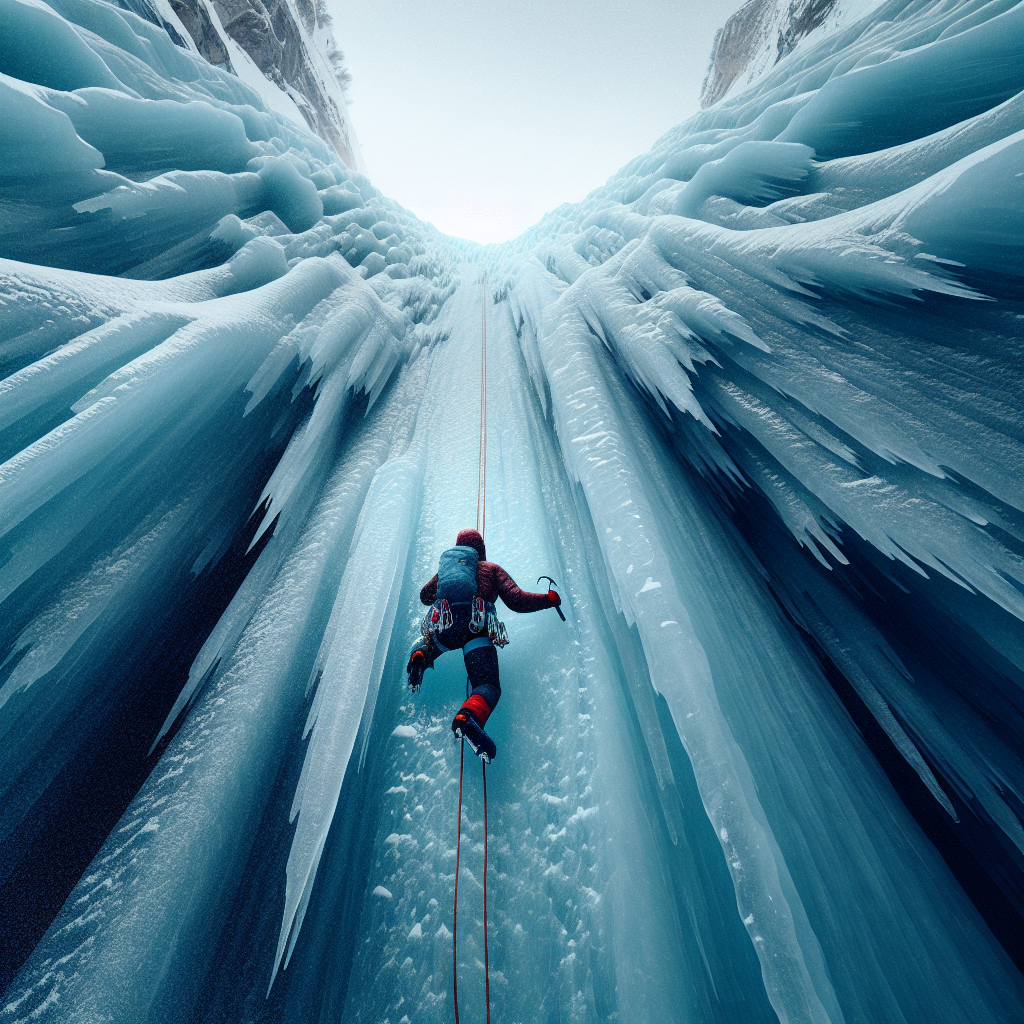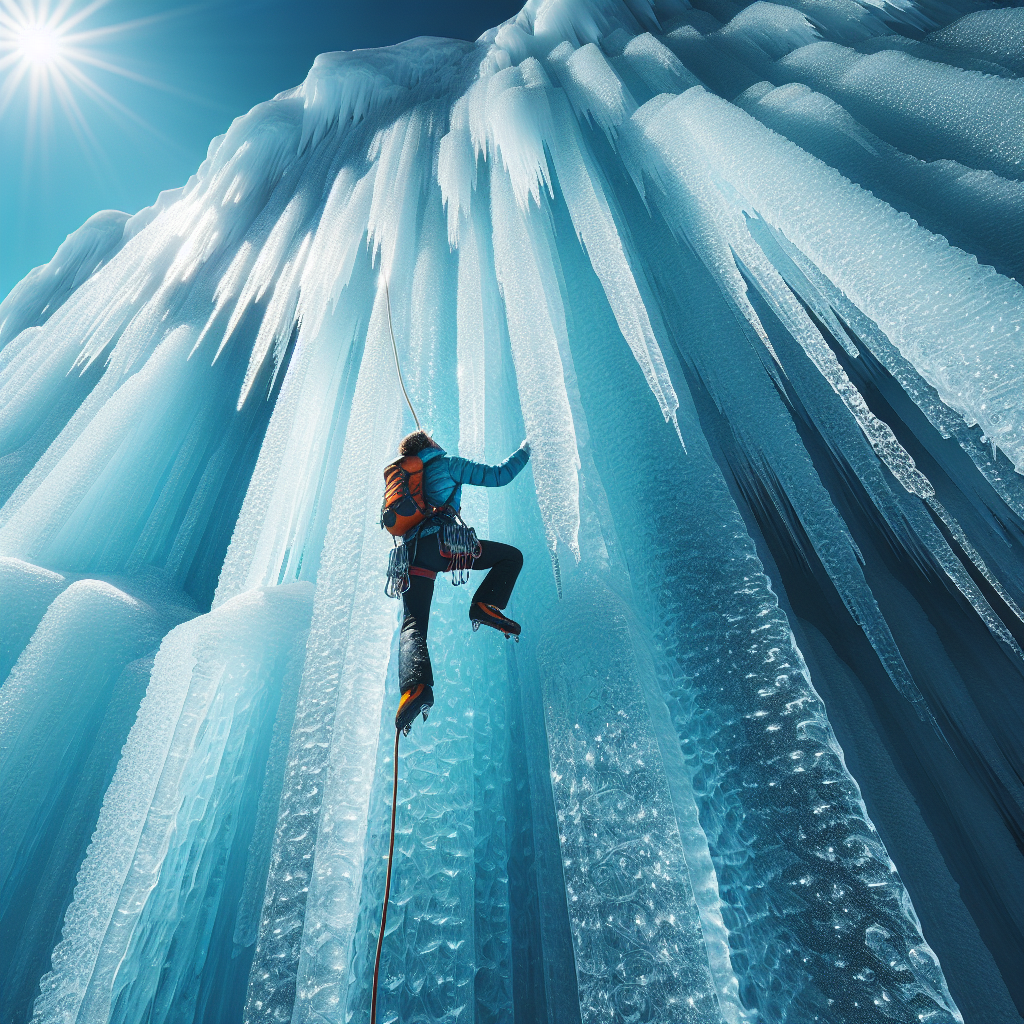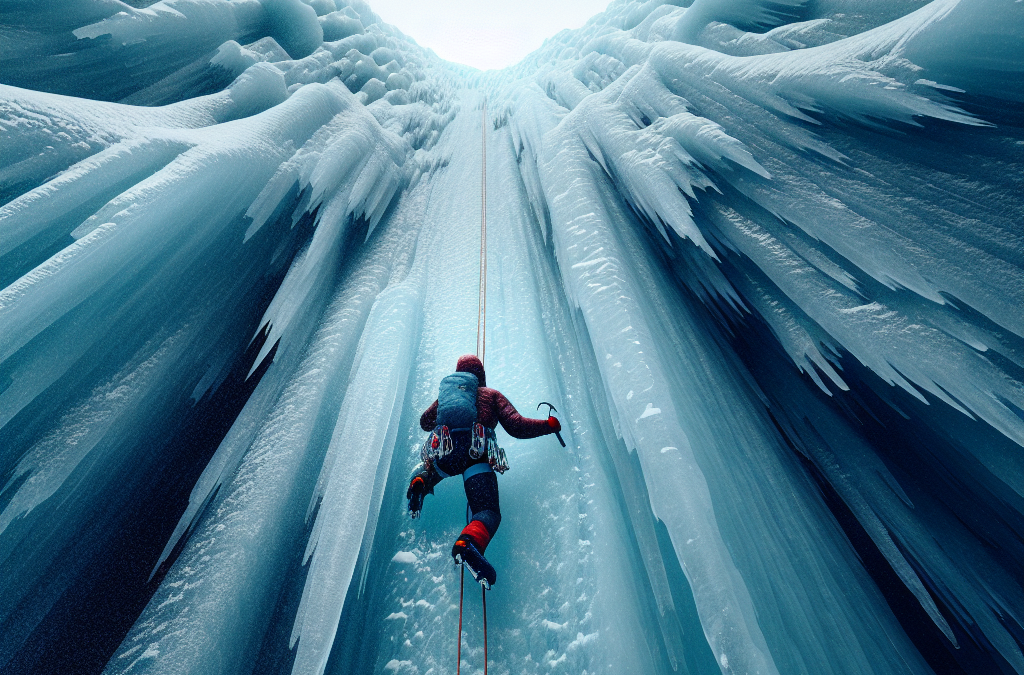Clinging to the frozen walls of an icy crevasse, bundled-up against the biting cold, ice tools in hand, you might just be getting toe-hold on one of the most thrilling adventure sports out there: ice climbing. In the thrilling guide, “Ice Climbing: The Chilling Challenge Explained,” you’ll be pushed to new heights as you explore the sheer adrenaline rush that comes with tackling frozen waterfalls, icy crags, and other frosty obstacles. Filled with insights from experienced climbers and expert advice on technique and safety, this guide is set to ignite your desire to take on this chilly yet exhilarating venture.

Understanding Ice Climbing
Ice climbing is a thrilling yet challenging winter sport where you ascend inclined ice formations. It offers countless opportunities to conquer vertical cliffs, frozen waterfalls, and glaciers using nothing but your wits, determination, and specialized equipment. Adventurous souls who love the snow, the adrenaline rush, and the wild like to venture into ice climbing.
Definition of ice climbing
Ice climbing is an extension of mountaineering and differs from traditional rock climbing as it involves traversing slippery and freezing vertical surfaces. To be successful, climbers use specialized equipment like ice tools and crampons, along with their physical strength, mental courage, and techniques.
Differences between ice climbing and other types of climbing
While the ultimate objective of reaching the top remains the same, ice climbing is different from rock climbing in many ways. Ice climbers ascend on the icy surfaces that are constantly changing and easily breakable. Rather than relying mostly on body strength, it demands good balance, core stability, footwork, and the ability to anticipate the ice’s condition.
Brief history of ice climbing
The birth of ice climbing dates back to the early 20th century when climbers had to tackle ice while attempting Alpine routes. However, it wasn’t until the 1970s when climbers started using modern tools, and ice climbing emerged as an independent discipline. It has grown vastly over the years, starting from a necessary means to climb mountains to a separate sport.
Ice Climbing Equipment
Being properly equipped is a must for ice climbing. The right gear can make the difference between a successful climb and a disastrous one.
Essential gear for ice climbing
The essential gear for ice climbing includes specially designed ice tools and crampons, climbing harness, helmet, and belay device. Ice screws and rope are also critical for securing climbers on icy surfaces and preventing falls.
Special clothing for ice climbs
Dressing appropriately is also as important as gear in ice climbing. Your clothing should be layered, warm enough to withstand freezing temperatures, yet breathable to regulate body temperature during the climb. Use moisture-wicking materials to keep sweat at bay, and don’t forget the crucial importance of gloves and a quality pair of insulated climbing boots.
Understanding how to use ice climbing gear
Each climbing gear has a specific use, and understanding how to use each one properly is critical for safety. Ice axes, for instance, are used for gaining purchase on the ice and balancing, while crampons provide foot traction. Knowing these functionalities aids in maximizing their efficiency.
Physical and Mental Preparation
Ice climbing is not just a physical activity but a mental game too. It demands certain fitness requirements and mental endurance.
Physical fitness requirements for ice climbing
While strength plays a big role in ice climbing, having good cardiovascular endurance makes a huge difference. It requires a mix of core stability, leg strength, and upper body power. Regular workouts along with specific exercises like pull-ups, squats and planks can help you prepare for the climb.
Mental strength needed for ice climbing
Ice climbing is as much a mental challenge as it is a physical. The need to make crucial decisions in potentially dangerous situations, the ability to manage fear and stress, and maintaining focus are key. Building this mental resilience often comes from experience and efficient training.
Understanding the role of acclimatization
Climbing at higher altitudes involves challenging and dangerous circumstances. Acclimatization helps your body adjust to lower oxygen levels and helps avoid altitude sickness, which can be potentially life-threatening, making this process very important for climbers.
Safety Measures and Risk Management
Climbing on ice involves risks and understanding them will keep you safe.
Immediate dangers during ice climbing
Apart from falling, other immediate dangers during ice climbing include frostbite, hypothermia, and avalanche. It is also possible to kick loose chunks of ice or stumble on an unstable snow patch.
How to prevent ice climbing accidents
Ice climbing accidents can be prevented with adequate preparation, checking weather conditions, using appropriate gear, understanding the ice conditions, and never going beyond your capabilities.
Emergency procedures in ice climbing
In case of an accident, immediate steps should be taken to ensure the climber’s safety. All ice climbers should be familiar with self-rescue techniques and have fundamental first-aid skills.

Techniques in Ice Climbing
Ice climbing involves specific techniques that make your climb safe and successful.
Basic ice climbing movements
The basic movements in ice climbing include swinging the ice tool, kicking the crampons into the ice, and moving up while maintaining balance. It’s all about rhythm – swing, kick, and step up.
Advanced ice climbing techniques
When you get more comfortable with the basics, you can start learning advanced techniques. These can include techniques like figure-four and figure-eight, which allow climbers to navigate overhangs and roofs with relative ease.
Common mistakes and how to avoid them
Common mistakes in ice climbing include over-gripping the ice tools, not moving the feet enough, or not having good balance. Spending time practicing, observing experienced climbers, and seeking professional instruction can all help in avoiding these usual errors.
Different Types of Ice Climbs
Climbing ice can come in different forms, each with its unique challenges.
Water ice climbing
Water ice climbing involves climbing frozen waterfalls or icy cliffs formed from water running over rocks. This form of climb can be highly unpredictable, depending on the water flow and current weather conditions.
Alpine ice climbing
Alpine ice climbing differs in that it involves climbing the icy portions of a mountain, often as part of a larger mountain climbing expedition. Here, the challenge is not just in climbing the ice itself but also dealing with high altitude and harsh weather conditions.
Mixed climbing and its unique challenges
Mixed climbing involves climbing routes that have both ice and rock. This requires the climber to switch between ice climbing and rock climbing techniques, thus bringing its own set of unique challenges.
Unique Conditions of Ice Climbing
Climbing ice is never the same, and that’s what makes it exciting.
Climbing in various weather conditions
Climbing conditions change with weather conditions. Warm weather can melt the ice and make it unstable, while freezing conditions make it brittle and prone to fracture.
Understanding frozen waterfall ice
Frozen waterfall ice can be challenging due to its unpredictable nature. Studying the waterfall from different angles and identifying safe climb routes are vital to negotiation with this kind of ice.
Surviving night climbs
Night climbs add a whole new level of excitement and danger to ice climbing. Adequate lighting is necessary, and climbers must be even more alert to their surroundings as visibility is limited.
Ice Climbing Competitions
Ice climbing is now more than just a hobby for many and is professionally competitive.
Most famous ice climbing competitions
Competitions like the Ice Climbing World Cup and Ice Climbing European Championships have taken ice climbing to an international level. Here, climbers participate in challenging climbs under timed conditions.
Winning strategies for ice climbing competition
To win, climbers have to be fast yet precise, and balance speed with safety. Adequate practice, unique climbing techniques, and mental preparation will succeed in winning strategies.
Training for competitive ice climbing
For those looking to enter the competitive arena, formal training under skilled coaches is recommended. Workouts should include building upper body strength, leg strength, and endurance training.
Recreational versus Professional Ice Climbing
There is a world of difference between climbing ice as a hobby and doing it professionally.
Differences in preparation and mindset
While recreational climbers might climb for fun or to enjoy nature’s beauty, professional climbers follow a strict training regimen and diet. These differences show in preparation, commitment level, and mindset.
Potential careers in professional ice climbing
Professional ice climbing can lead to many career opportunities. Apart from professional competing, careers can include outdoor guiding, coaching, and even stunt work in films!
Fitting ice climbing into a balanced lifestyle
Ice climbing can be a demanding sport. However, by managing time efficiently and staying committed to training, it can be included as part of a balanced lifestyle.
Environmental Concerns and Ethics
Ice climbers have a role in maintaining and conserving the frosty places they love to climb.
The impact of climbing on the environment
Climbing activities can impact the environment, including vegetation damage, disturbance to wildlife, and littering.
Practices for sustainable ice climbing
Climbers can practice sustainable ice climbing through a variety of ways: respecting closures, adhering to established routes, carrying out all litter, and educating fellow climbers about responsible practices.
Role of climbers in conservation efforts
Ice climbers can play a crucial role in conservation efforts. Being regular visitors to these icy landscapes, climbers can help by reporting changes, advocating for protection of these places, and joining local and global conservation initiatives.

